
Mexico economic growth tumbles in third quarter; outlook worsens

November 9, 2021
Mexico’s gross domestic product (GDP) contracted an annualized 0.8 percent in third quarter 2021. In addition, the consensus forecast for GDP growth in 2021, compiled by Banco de México, was revised down from 3.9 percent in August to 3.6 percent in September (fourth quarter/fourth quarter).[1]
The latest data available show industrial production and employment grew, while exports and retail sales fell. The peso/U.S. dollar exchange rate remained relatively unchanged for the sixth consecutive month, but inflation rose in September.
New COVID-19 cases continued falling after peaking in mid-August. Vaccination progress has improved, with about 42 percent of the population fully vaccinated.
Output falls in third quarter 2021
Mexico’s negative third-quarter GDP growth was well below its long-run average of 2.4 percent (Chart 1). Preliminary estimates indicate that output from both goods-producing industries (manufacturing, construction, utilities and mining) and agriculture increased 2.8 percent, while service-related activities (wholesale and retail trade, transportation and business services) fell 2.4 percent.
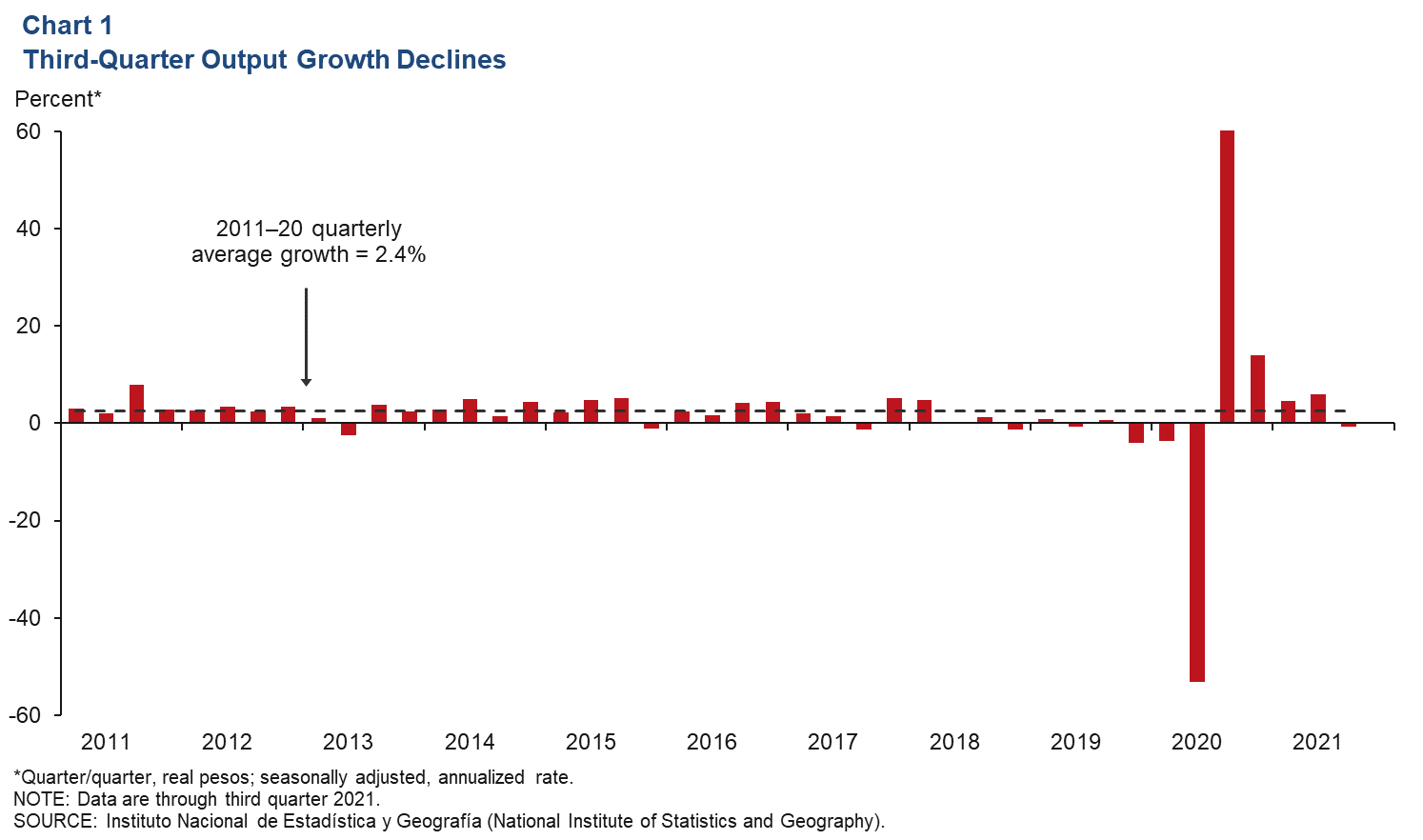
Exports trend down even as oil exports improve
The three-month moving average of total exports fell 1.6 percent in August as oil exports increased 3.9 percent but the dominant manufacturing category decreased 2.2 percent (Chart 2). On a month-over-month basis, total exports declined 4.8 percent in August, and manufacturing exports decreased 5.2 percent. Mexico’s total monthly exports in August were up 3.3 percent compared with prepandemic levels in February 2020.
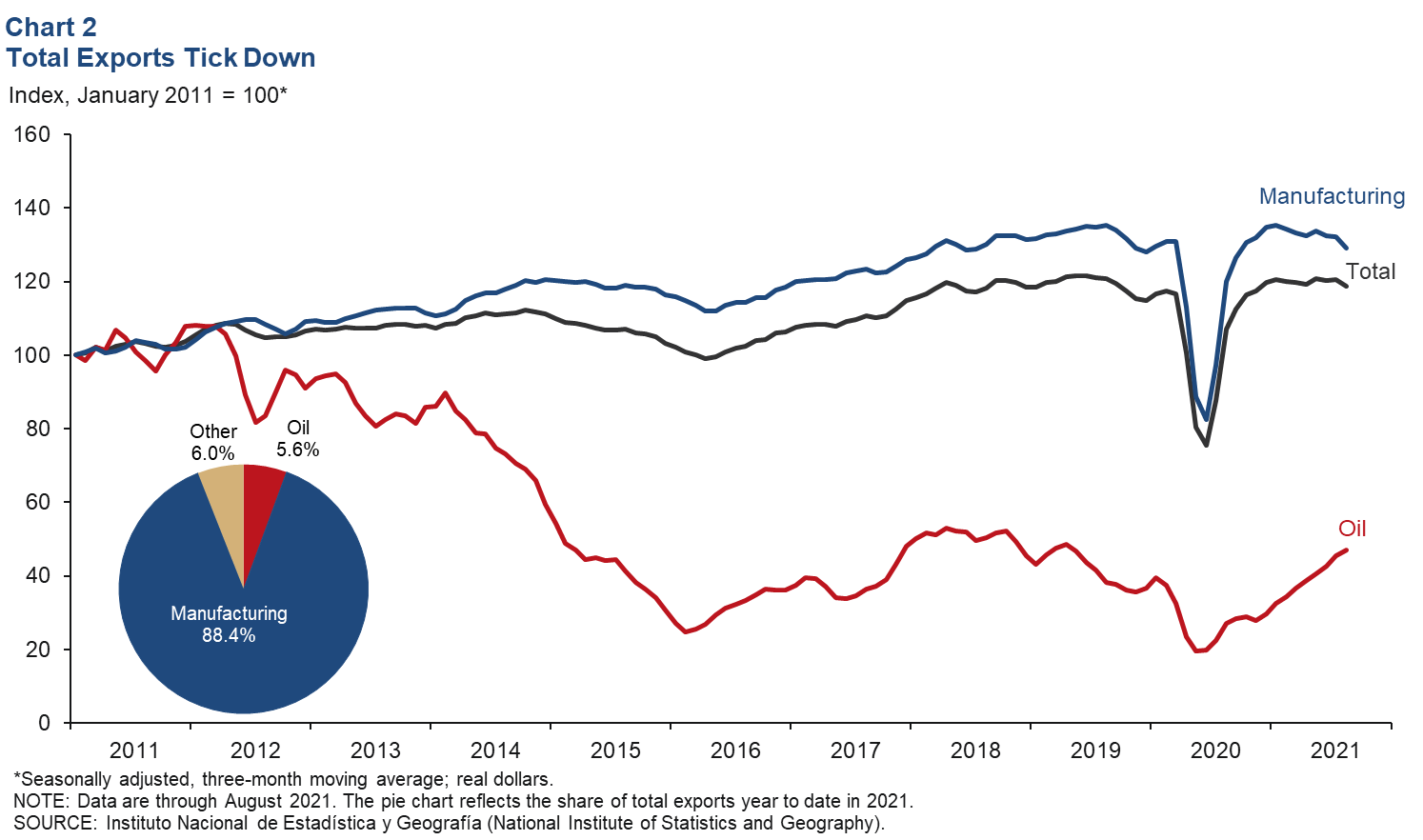
Industrial production edges up in August
The three-month moving average of Mexico’s industrial production (IP) index—which includes manufacturing, construction, oil and gas extraction, and utilities—and manufacturing IP both increased slightly in August (Chart 3). On a month-over-month basis, IP was up 0.4 percent in August, and the manufacturing index grew 0.2 percent. North of the border, U.S. IP fell 1.3 percent in September after declining 0.1 percent in August, and the three-month average was down 0.1 percent in September. The correlation between IP in Mexico and the U.S. increased considerably with the rise of intra-industry trade due to the 1994 North American Free Trade Agreement (recently replaced by the United States–Mexico–Canada Agreement).
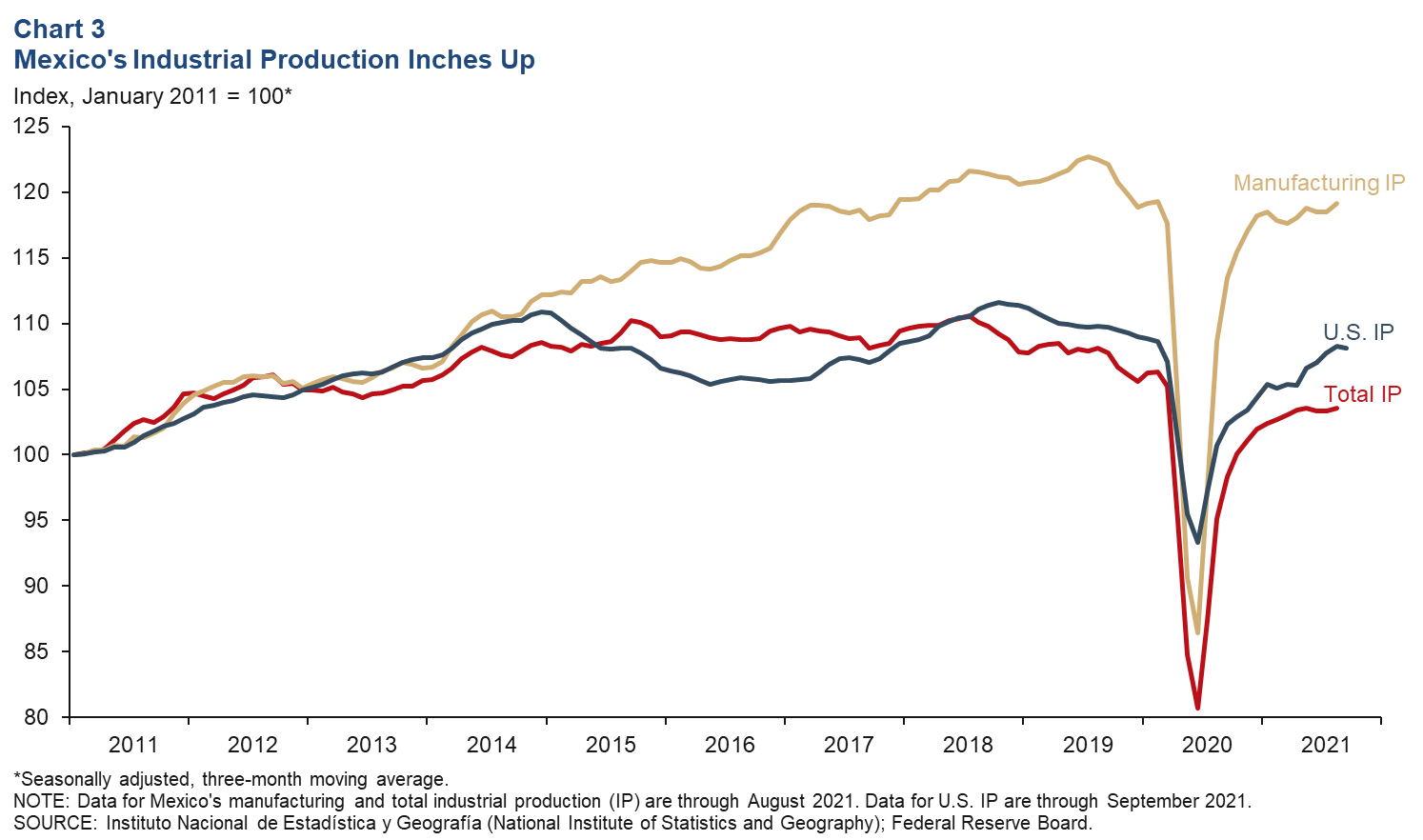
Retail sales continue to decline
The index of real retail sales in Mexico decreased 0.4 percent based on a three-month moving average through August (Chart 4). On a month-over-month basis, retail sales were flat in August after falling 0.5 percent in July. Retail sales are down 1.4 percent from prepandemic levels in February 2020.
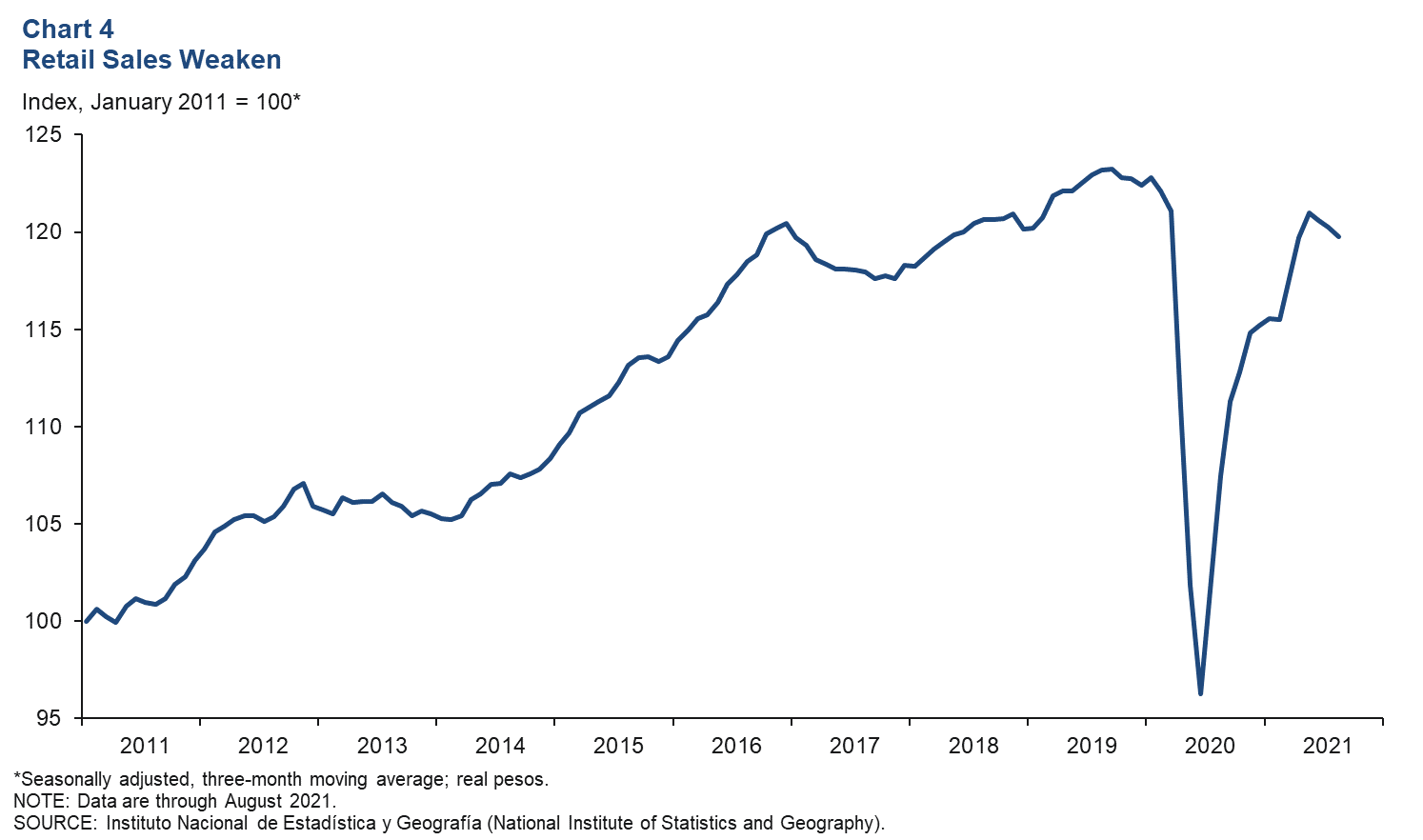
Payroll gains improve
Formal sector employment—jobs with government benefits and pensions—rose an annualized 3.9 percent (65,000 jobs) in September, slightly higher than August’s 3.3 percent increase (Chart 5). Year-over-year employment grew 4.6 percent in September. Total employment, representing 55 million workers and including informal sector jobs, increased 23.5 percent year over year in second quarter 2021, based on the most recent data. September’s unemployment rate was 3.9 percent, down from 4.0 percent in August.
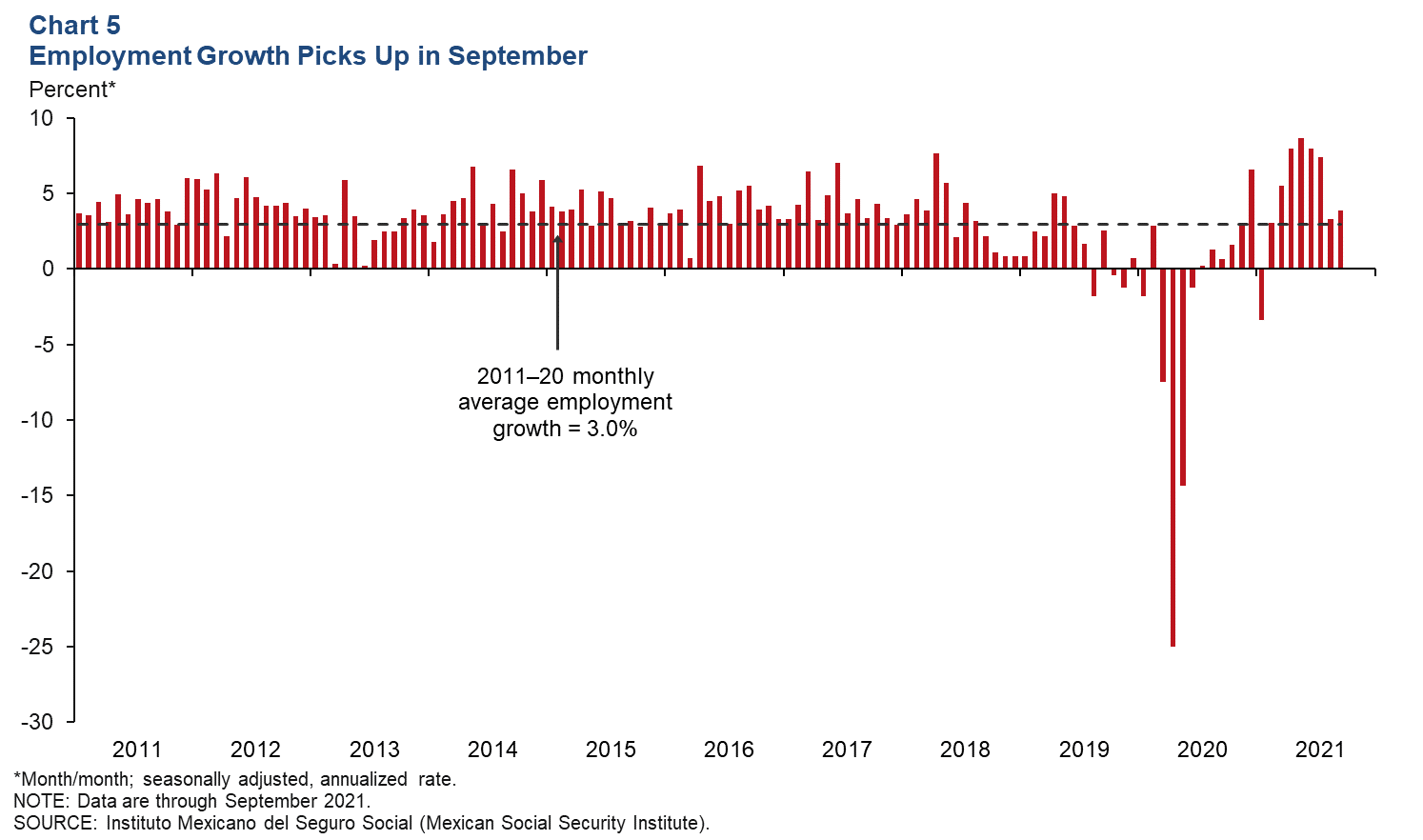
Peso holds steady against the dollar
The Mexican currency averaged 20.0 pesos per dollar in September and has averaged between 20.0 and 20.1 pesos per dollar over the past six months. However, the peso is still down 6.0 percent from the prepandemic level in February 2020 (Chart 6). The peso has been under pressure due to persistently higher average inflation in Mexico than in the U.S. and, more recently, increased uncertainty regarding domestic and global growth.
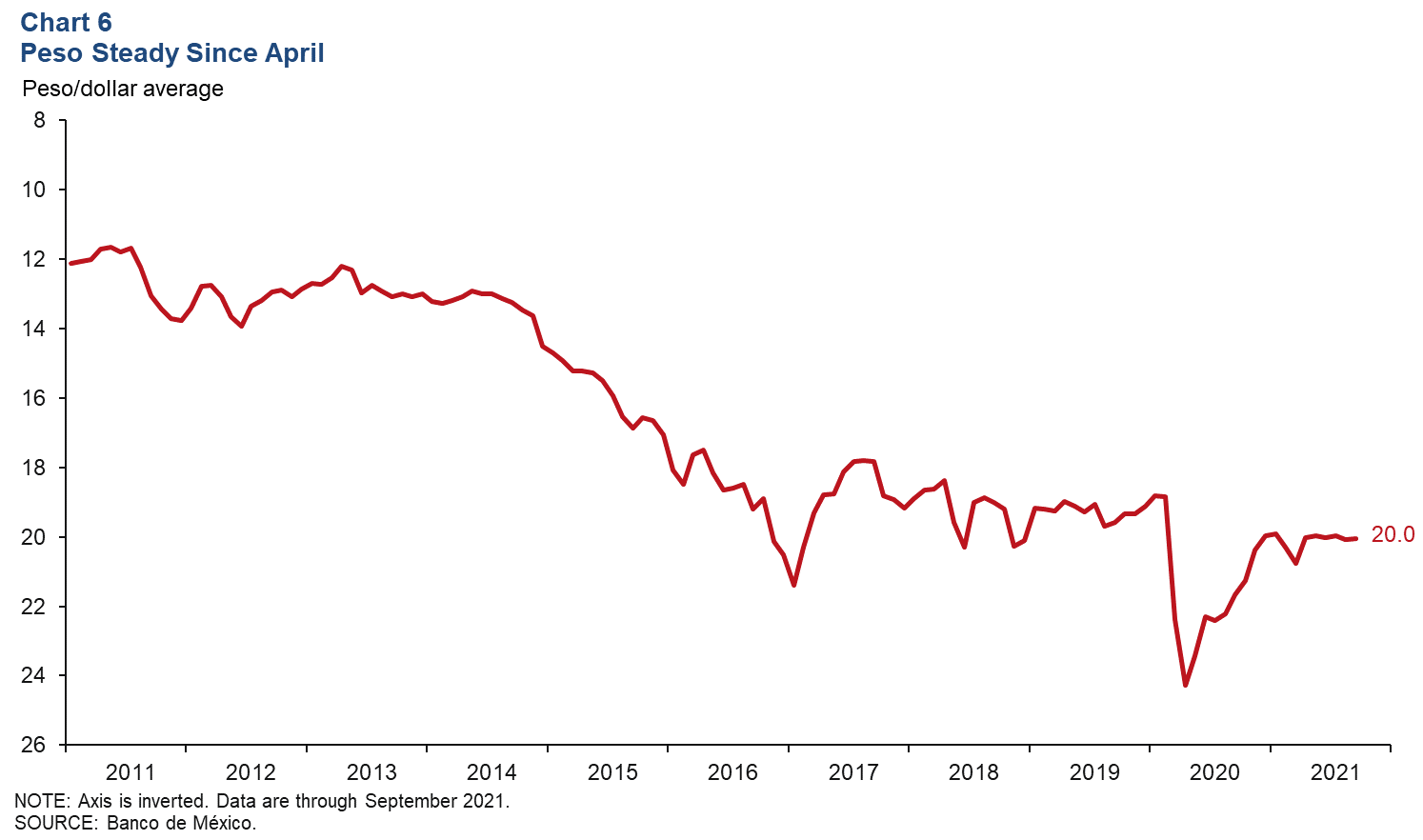
Foreign-owned government debt slips further
The share of foreign‐owned Mexican government securities fell to 18.4 percent in September, the lowest level since October 2010. The three-month moving average decreased to 18.6 percent (Chart 7). The extent of nonresident holdings of government debt is an indicator of Mexico’s exposure to international investors and a sign of confidence in the Mexican economy.
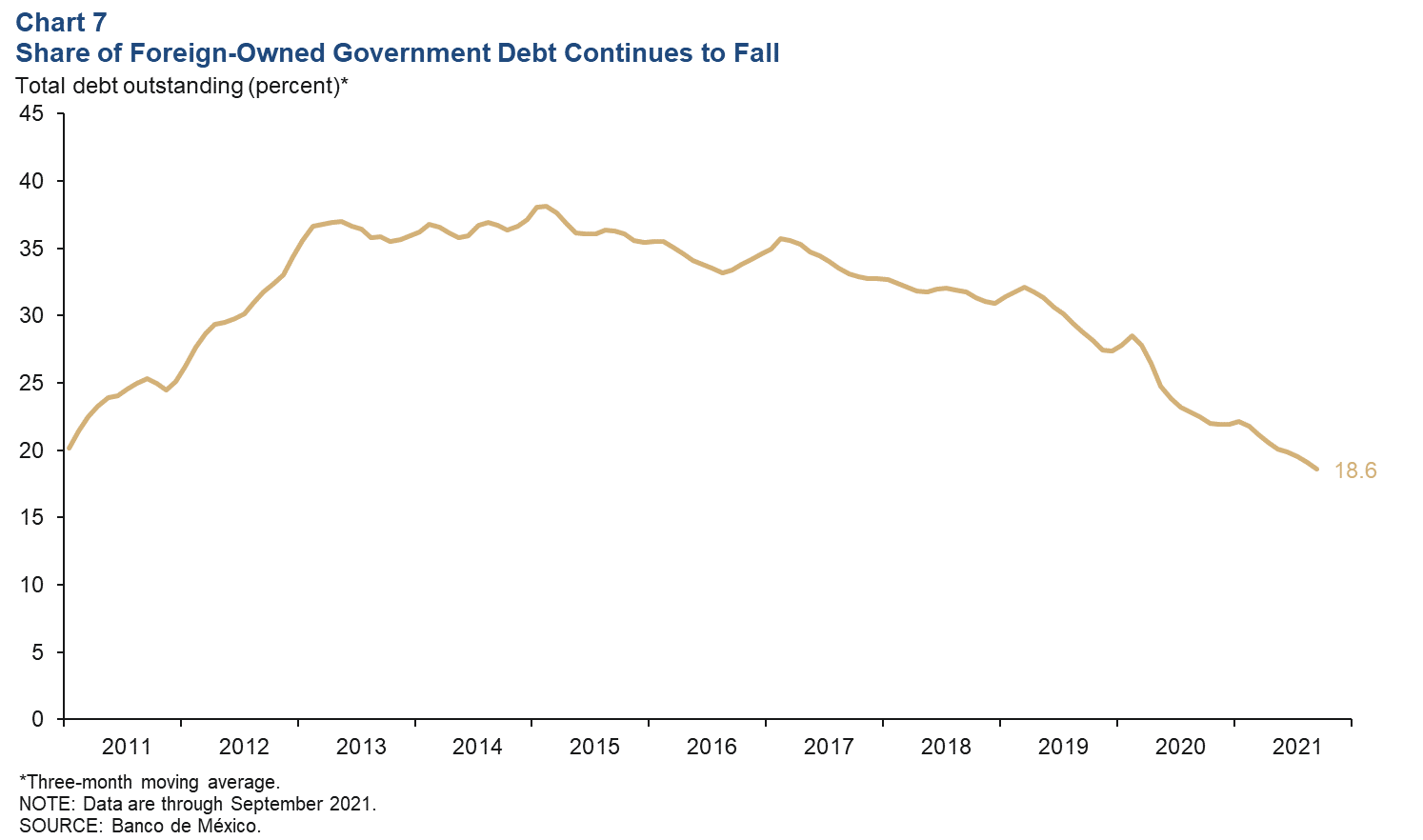
Inflation rises in September
The 12-month change in Mexico’s consumer price index (CPI) was 6.0 percent in September, a slightly faster rate of growth than August’s 5.6 percent increase (Chart 8). CPI core inflation (excluding food and energy) rose 4.9 percent in September over the previous 12 months. Banco de México increased the benchmark interest rate by 25 basis points to 4.75 percent on Sept. 30. In the public announcement accompanying the interest rate decision, the central bank cited increasing inflationary pressures, particularly from rising commodity prices and bottlenecks in production.
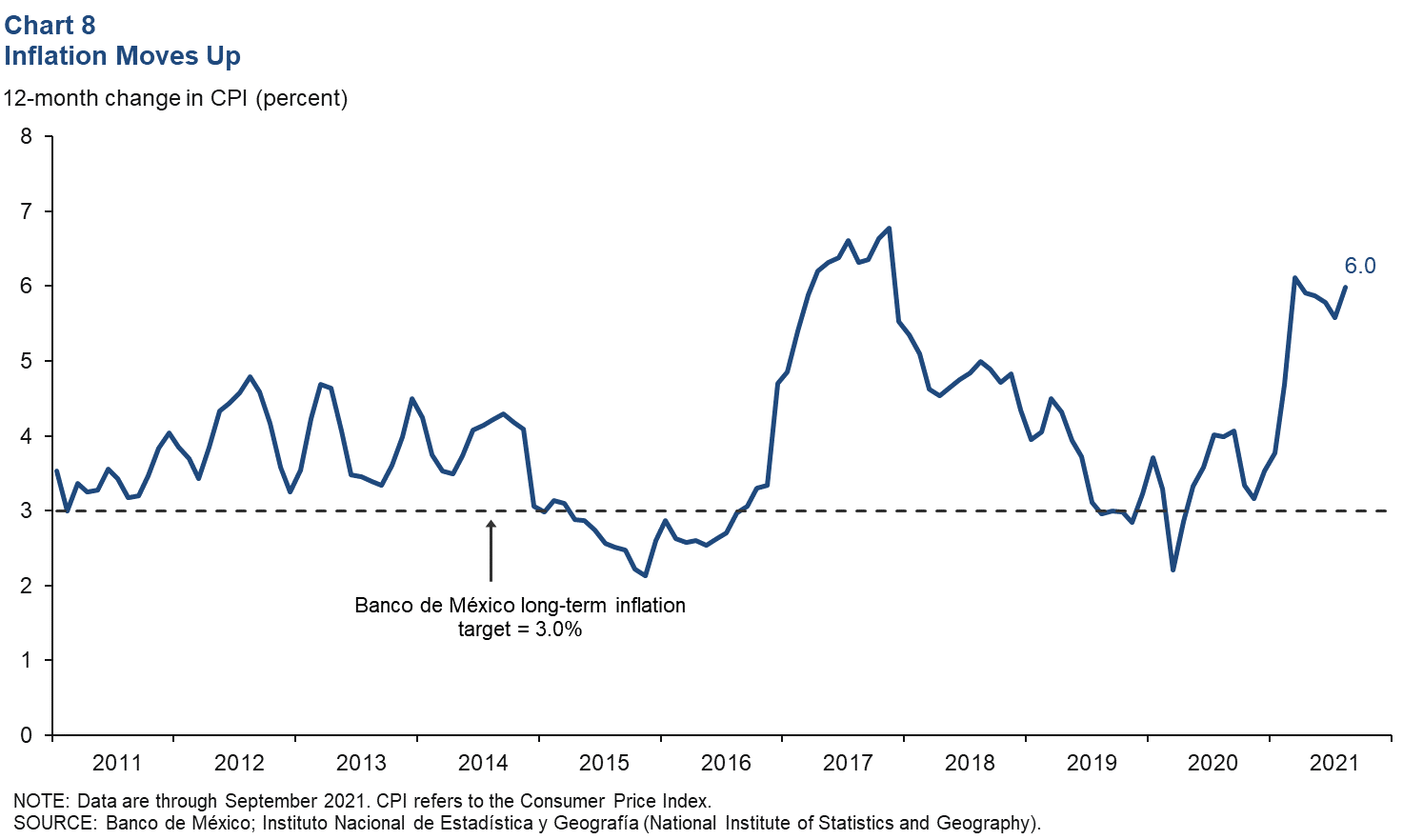
Note
- The GDP growth forecast based on average year-over-year quarterly growth remained at 6.2 percent. Encuesta sobre las Expectativas de los Especialistas en Economía del Sector Privado: Septiembre de 2021, (communiqué on economic expectations, Banco de México, September 2021). The survey period was Sept. 21–29.
About the Authors
Cañas is a senior business economist, and Coia is a research analyst in the Research Department at the Federal Reserve Bank of Dallas.